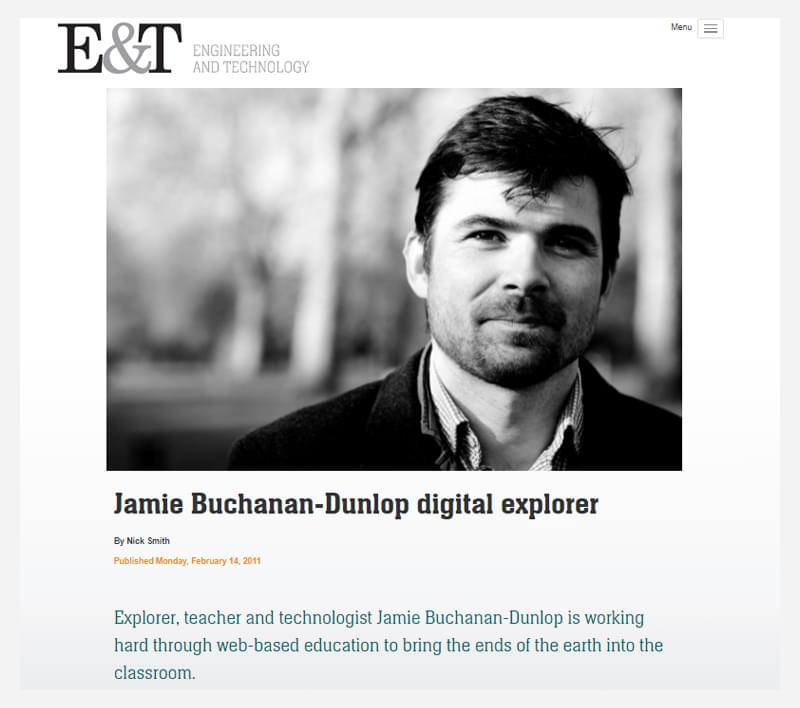Engineering and Technology Magazine: Interview with Jamie Buchanan-Dunlop

E&T interviewed Digital Explorer founder Jamie Buchanan-Dunlop who discussed about how he founded the web-based education enterprise to bring “the ends of the earth into the classroom”.
“The notion that there’s no longer a need to physically go out into the field and explore because of modern marvels like Google Earth is a misapprehension, he says. ‘We have wonderful images of swathes of rainforest canopy available to us in the classroom. But we still need people to go in there and find out what’s underneath. We have satellite images of the great expanses of ocean ice, but we still send explorers out there with old-fashioned technologies like ice-core samplers. We drag around ground penetrating radar in the Wahiba Sands to examine dune composition.’
The digital age may have ushered in better ways to get to where we’re going, but where technology wins hands-down is in the provision of the means to send back information from the field. If you look back only a few decades to the 1970s and 1980s we were still exploring along the principles of the Heroic Age and before. Determined explorers set off on feats of endurance and bravery, often for years at a time, to the remotest corners of the planet, to return with a carousel of slides and tales of derring-do and discovery.
‘Now we can speak live to an audience from the field, which not only captivates more, but allows an element of interaction. You can ask an explorer a question from the comfort of your school, sitting room or boardroom. You can talk to someone living on the edge of human knowledge and endurance and ask them what it’s like. It’s this live story-telling that is one of the major developments technology has brought.’ It’s all about the ‘digital chain’, says Buchanan-Dunlop.
14 February 2011